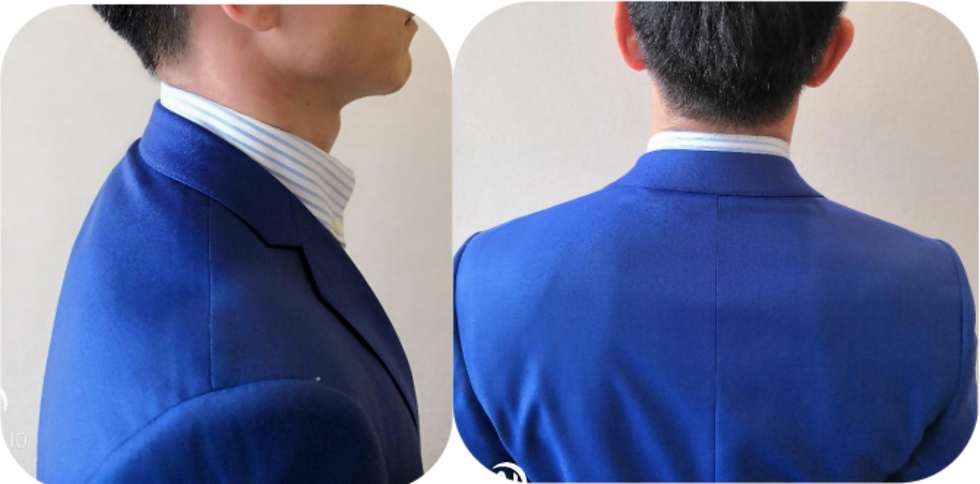The subjective factors that influence fabric weight
- MTM Apparel Solutions
- Mar 17
- 3 min read

First-time custom suit clients often ask what '260g' means on the fabric label when selecting fabrics.
We can tell them: This is the gram weight, representing the weight of the fabric per square meter. Gram weight partially indicates the thickness of the fabric, but this only reflects the physical weight.
The client can only judge by feel without a fabric label, or if two fabrics have similar gram weights. At this point, the fabric's color, composition, and weave all affect the subjective judgment of fabric weight.
Below is a detailed explanation of how fabric color, composition, and weave subjectively influence a client's judgment of fabric weight:
Fabric Color
First, bright things, like the sky, give a feeling of lightness and distance, while dark things, like the earth, give a feeling of heaviness and proximity. This is also true for fabric color. The higher the brightness, the lighter the psychological feeling. The order of fabric colors from light to heavy is roughly as follows: white, yellow, orange, red, mid-gray, green, blue, purple, and black.

Even if you don't remember this order, it's okay, because fabric lightness, besides being related to hue, is also related to color saturation. The simplest way to distinguish is: to set your phone to black and white photography mode. The lighter the fabric color appears, the lighter the fabric feels; the darker the color, the heavier the fabric feels.
Nowadays, the occasions requiring suits have little to do with natural weather. This means that fabric gram weight doesn't significantly affect the wearability of the suit. If the fabric color allows, a 240g fabric can be worn in spring and summer and is not unsuitable for autumn and winter wear.
2. Fabric Raw Materials
Besides fabric color, different levels of luster also create different sensations of weight. Fabric luster, besides being related to the brightness and darkness of the light, is mainly related to the raw material composition of the fabric.
Fabrics are woven from fibers. The smoother the surface of the fibers, the smoother the resulting fabric's surface. Under light, the reflection from a bright surface is stronger, more light enters the eye, and the fabric feels lighter. Conversely, the rougher the fabric fibers, the poorer the luster, and the heavier the fabric feels.

Even among natural fibers, silk has the smoothest surface, followed by cotton, with wool having the roughest surface. Of course, this is relative; fine wool fabrics are not necessarily less lustrous than low-quality cotton fabrics.
Regardless, generally speaking, silk has a higher luster than wool. With the same gram weight, silk fabric will appear lighter than wool fabric.
3. Fabric Weaving
As mentioned above, in addition to the material itself, the weaving method also affects the texture and luster of the fabric's surface. Generally speaking, coarsely woven fabrics appear thicker than finely woven fabrics and also feel heavier.
Even with finely woven fabrics, treatments like raising the nap, such as in flannel, increase the fabric's thickness and make it feel heavier than a plain worsted fabric.

Beyond changes in fabric thickness, the finer and denser the weave, the smaller the gaps between the warp and weft yarns, and the more yarn there is per unit area. This results in a fabric that appears denser and consequently feels heavier.

After all, loosely woven fabrics will appear more translucent. Therefore, twill fabrics, after finishing treatments, will appear heavier than plain weave fabrics. Fabrics with more complex patterns, such as herringbone or other textured weaves, will appear even heavier than twill.
The points above mainly concern the psychological perception of fabric weight. As people's understanding of fabrics deepens, subjective influences decrease, and there's a greater tendency to judge fabric weight from a physical perspective.
In terms of suits, fabric weight does not necessarily determine the final garment weight. Different interlinings and construction methods also affect the perceived weight of the suit. For example, unlined suits will have a different weight, but that is not the focus of this article.




Comments